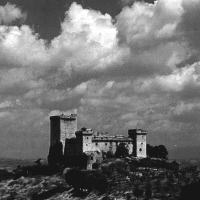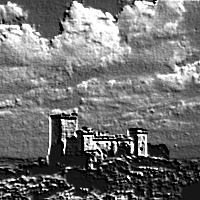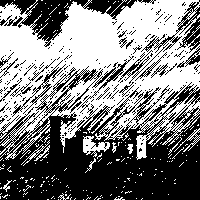Antenati di C.S. Lewis
-
Antenati di C. S. Lewis
- padre: Albert Lewis
- madre: Florence Augusta (Flora) Hamilton
- Flora Augusta Hamilton Lewis (1862-1908).
Flora Augusta Hamilton in Lewis
è stata in Italia a Roma da Bambina ed anche che il suo vero nome è Florence (Firenze)
da cui Flora
Sicuramente la madre avrà parlato a Lewis della sua esperienza in Italia
sembra che sia stata a Roma diversi anni
presumibilmente quando era bambina ,
quindi tra il 1865 ed il 1875
( età tra i 3 ed i 13 anni)
Flora Augusta Hamilton Lewis (1862-1908).
- "Albert was a brilliant and skillful teller of short, entertaining
stories about real incidents or people. He could act all the characters in his stories. He
loved poetry that contained pathos and rhetoric; this significant literary streak, being
encouraged by his Headmaster, led Albert to write his own stories and poetry. He loved the
liturgy of the Church of Ireland as contained in its Prayer Book, and he loved the
infinite treasures found in the verbal vaults of the Bible. With these gifts and
interests, it is not surprising that he was the first Superintendent of the Sunday School
at St. Mark’s, Dundela, a nearby Belfast suburb. Albert’s law practise was at 83
Royal Avenue, and he was to become Sessional Solicitor of the Belfast City Council and the
Belfast and County Down Railway Company, as well as Solicitor to the National Society for
the Prevention of Cruelty to Children. He impressed many juries with his effective
speaking abilities, and he also gave his services as a speaker to the Conservative Party,
gaining frequent acclaim from newspapers for his efforts. He loved to read Anthony
Trollope’s political novels. Later, both his boys claimed that, given the freedom and
the resources, he would have made a significant politician.
"Through his love for literature, Albert came to meet the love of his life. It is said that a faint heart has never won a fair lady. His heart had been stirred by the Rector’s pale, fair-haired, blue-eyed daughter, Florence Augusta (Flora) Hamilton, but her love was difficult to win. Flora was born at Queenstown in County Cork in 1862 and as a young girl lived in Rome with her parents. She proved to be of a much cooler temperament than her father, who was a chaplain in the Royal Navy during the whole of the Crimean War and a chaplain of the Anglican Holy Trinity Church in Rome from 1870 to 1874. The Hamiltons were the descendants of a titled Scottish family that was allowed to take land in County Down in the reign of James I. The Reverend Hamilton was a very highly principled and emotionally charged man.
Il fatto che Flora fosse a Roma nel 1870 non è un caso , ma un portato della storia , infatti
ci sono due eventi importanti in quegli anni
la guerra in Crimea e Roma Capitale con la presa di Roma e la breccia di porta pia.
Ovviamente sullo sfondo c'è l'indebolimento dello Stato Pontificio .
Fatto di cui forse gli inglesi pensavano di approfittare anche a livello religioso.
comunque il padre di Flora era cappellano militare al seguito delle truppe in Crimea
ora a Roma non ci sono chiese che si chiamano Holy Trinity
ma nel 1870-1874 c'era una chiesa chiamata così.
e non ho trovato riferimenti a Florence Augusta "FLORA" Hamilton
ed a suo padre Rev. Thomas Hamilton (1826-1905).
La chiesa che poi è diventato All Saints fu a Piazzale
Flaminia. Dopo 1870 il governo di Roma decise di ristrutturare quell'area,
che poi è diventata quel che è oggi.
la storia della chiesa di Roma dove visse Flora tra il 1870 ed il 1874 è su
ma cosa fece Flora a Roma in questi 4 anni ???????
ha imparato o conosceva la lingua italiana
è andata a scuola Roma aveva amici ect......????
si sa solo del piccolo miracolo avvenuta in una chiesa Forse cristiana ( quale ????)
questo si evince dagli scritti di Flora in cui racconta che quando aveva 12 anni ed era in una chiesa cattolica di Roma
vide il corpo di una giovane donna santa in una urna di vetro sotto all'altare, Flora racconta:
la bella figura con i fiori e le candele aveva un grande fascino per me , così tornai a trovarla da sola piu' volte
la stavo guardando affascinata quando ella aprì gli occhi e mi guardò, io fui terribilmente spaventata e impressionata e mi sentì gelare,
ebbi appena il tempo di vedere e di ammirare i suoi grandi occhi blu , quando ella li richiuse ancora.
Piu' tardi la Madre di Flora si mise a ridere e disse che non era possibile, questo fatto portò Flora a concludere che
era una cosa a cui non dare importanza ( a CUI NON DAR CORDA)
quanto detto è riportato in uno scritto tratto dalle pagine di Lewis ( LPI: 312).
During 1870-74 the family lived in Rome where Thomas Hamilton was Chaplain of Holy Trinity Church. There survives from this period the earliest document in Flora's hand. It is an account of a miracle she witnessed in one of the Catholic churches of Rome when she was 12 years old, and which WHL thought evidence of an eminent degree of her 'matter of factness.' Describing the body of a young female saint in a glass case beneath the altar, Flora said, 'the beautiful waxen figure with its flowers and candles had a great fastenation [sic] for me, so I went back by myself to look at it again...I was gazing fixedly at her when she slowly lifted her eyelids and looked at me; I was terribly frightened and felt myself getting cold - I had hardly time to look at or admire her large blue eyes when she again closed them.' Later, her mother 'laughed and said it was nonsense,' thus causing Flora to conclude that 'it was all done by cords' (LP I: 312).
CRIMEA, GUERRA DI
(1854-1856). Conflitto tra la Russia e una coalizione composta da Turchia, Francia, Gran Bretagna e Regno di Sardegna determinato dalla lotta per il controllo della penisola balcanica e del Mediterraneo (questione d'Oriente). Pretesto ne fu la contesa tra Napoleone III e lo zar Nicola I per il possesso dei luoghi santi. Inoltre il rifiuto della Sublime porta di riconoscere il protettorato russo sui principati moldo-valacchi di religione ortodossa e la conseguente distruzione di una flotta turca a Sinope (1853) spinsero l'alleanza franco-inglese a intervenire a fianco della Turchia. Le truppe, al comando del francese Saint-Arnaud e del britannico lord Raglan, sbarcarono in Crimea nel settembre 1854, vinsero una prima battaglia ad Alma e cinsero d'assedio Sebastopoli. Nel frattempo Cavour aveva spinto Vittorio Emanuele II ad aderire alla coalizione antirussa (1855), nel tentativo d'inserire il Piemonte nel concerto delle potenze europee. I bersaglieri sardi si distinsero sulla Cernaia, mentre a Balaklava e a Inkermann si batterono i franco-inglesi. Nel settembre 1855, con la caduta di Sebastopoli, Alessandro II, succeduto a Nicola I, fu costretto al congresso di Parigi (1856), di cui il Regno di Sardegna approfittò per sollevare, sia pure solo simbolicamente, la questione della nazionalità italiana.leggi anche
Flora was born at Queenstown in County Cork in 1862 and as a young girl lived in Rome with her parents. She proved to be of a much cooler temperament than her father, who was a chaplain in the Royal Navy during the whole of the Crimean War and a chaplain of the Anglican Holy Trinity Church in Rome from 1870 to 1874. The Hamiltons were the descendants of a titled Scottish family that was allowed to take land in County Down in the reign of James
******************************************************************
Quindi Flora fu a Roma con suo padre dal 1870 al 1874
da 8 a 12 anni.
*********************************************************************
Si parla anche di un miracolo che la piccola Flora ebbe a Roma
Grazie per queste informazioni. E veramente interessante sapere che
quest'altra chiesa sorse in rivalità alla chiesa ufficiale. Si lei ha capito
bene. Io sapevo che c'era un'altra chiesa nella seconda locazione, ma non il
nesso con Hong Kong ne che stava per 40 anni a San Silvestro.
Grazie mille.
Sara
-----Messaggio originale-----
Da: Fortunati Giuseppe [mailto:fgiusepp2@tin.it]
Inviato: giovedì 11 ottobre 2007 17.10
A: Sara Mac Vane
Oggetto: Re: la sua richiesta CS Lewis e Narnia a Roma
Grazie per le notizie
ho letto anche la storia della Vostra chiesa ed ho provato ad incrociare i
dati
ma il mio inglese non è molto buono.
ora a Roma non ci sono chiese che si chiamano Holy Trinity
ma nel 1870-1874 c'era una chiesa chiamata così.
ho tratto questo brano che pero' non ho capito molto bene
e non ho trovato riferimenti a Florence Augusta "FLORA" Hamilton
ed a suo padre Rev. Thomas Hamilton (1826-1905).
Riferimenti in lingua inglese
*******************************
C. S. LEWIS: A COMPANION & GUIDE, by Walter Hooper, Harper Collins
Publishers, London, 1996, p. 3, states:
"Clive's mother, Florence Augusta "FLORA" Hamilton, was the daughter of the
Rector of St. Mark, Dundela, the Rev. Thomas Hamilton (1826-1905). Thomas
came from a long line of Church of Ireland (Anglican) ecclesiastics. His
father, Hugh, had been Rector of Benmore, Enniskillen, and his grandfather,
Hugh Hamilton (1729-1805), had been Bishop of Clonfert and later Bishop of
Ossory. FLORA was a graduate of Queen's College in mathematics and
logic...."
"Thomas Robert Hamilton, who was born on 28 June 1826, took a first in
Theology at Trinity College, Dublin, in 1848, and was made deacon in the
same year. In 1859 he married Mary Warren (1826-1916), the daughter of Sir
John Borlasse Warren (1800-1863), by whom he had four children: Lilian
(1860-1934), Florence Augusta (1862-1908), Hugh (1864-1900) and Augustus
(1866-1945). From 1870 until 1874, Thomas was chaplain of Holy Trinity
Church, Rome, after which he returned to Ireland and took up the incumbency
of St. Mark, Dundela.
A Roma c'era una chiesa che ora si chiama All Saints , ma prima si chiamava
Holy Trinity Church
almeno cosi' sembra da quanto sotto.
Mi potresti dare conferma a questa mia supposizione ???????????????
****************************************************************************
***************
http://www.allsaintsrome.org/history.html
Some disaffected worshippers at the Granary Chapel banded together under a
Dr Gason and set up a rival congregation for Church of England services,
apparently aided and abetted by one Bishop Alford, of the Anglican diocese
of Victoria (Hong Kong). Soon after 1870, in the new freedom available to
non-Roman Catholics after the unification of Italy, they engaged Antonio
Cipolla to design a place of worship whose modest classical façade looked
across piazza San Silvestro to what is now the central Post Office. It was
dedicated to the Holy Trinity, and had been made possible by virtue of the
handsome response to the dissidents' appeal in the British press. Only about
forty years later, however, the city fathers required the church to be
demolished to make way for an enlargement of the square. A fresh site had to
be found.
This was obtained in what vas then called via Doganli (now via Romagna) in a
district of Rome which was fast developing on hitherto open land inside the
Aurelian walls, towards Porta Pia. The new Holy Trinity, designed by an
architect called Fisher, was a handsome enough building in a Romanesque
style of brick with stone detail. Ironically, the silver trowel with which
Sir Rennell Rodd (British Ambassador of the day) laid the foundation stone
on 28th April 1913 is still in the possession of All Saints'. So are the
service registers. These witness to a fairly thriving life in earlier days,
and to acts of cooperation with All Saints' - a link encouraged by the
Bishop of Gibraltar many years after his predecessor had disapproved of the
split. However, with numbers at worship reduced to about two dozen, Holy
Trinity held its last services on 18th April 1937; and a book of 1945
reported it "lost among greenery, vandalized and closed for worship years
ago." In about 1948, the site was sold for development, the church
demolished, and offices built where once the English Anglicans had their
Other Home in Rome.
In 1875 there began the lengthy ministry in Rome of the Revd (later Canon)
Henry Watson Wasse. He was to see through the whole project of the new
church, and would remain to enjoy some of the spiritual benefits of Street's
building until his death in office in 1891. -
-



